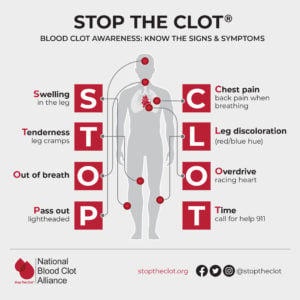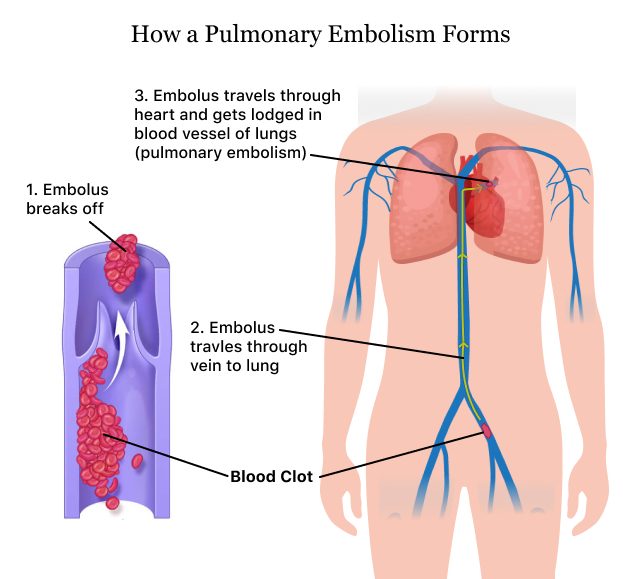Describe the Process of Blood Clotting in Human Beings
They release thrombokinasethromboplastin. Calcium ions enzymes platelets damaged tissues activating each other.

Coronavirus Blood Clot Mystery Intensifies
Vitamin KJ phylloquinone.

. When a blood vessel is cutinjured plateletsthrombocytesdamaged tissuewound is exposed to the air. Process of Blood Coagulation. They also activate a.
The blood clotting process or coagulation is an important process that prevents excessive building in case the blood vessel becomes injured. - When blood vessels are damaged blood comes out and platelets are exposed to air and they rupture on the damaged tissue. Blood proteins and platelets come together and form what is known as a fibrin clot.
The platelets stick together forming a temporary plug. A cut on the skin or an internal injury creates a small tear in a blood vessel wall which causes blood flow. Answer 1 of 15.
Next small molecules called clotting factors cause strands of blood-borne materials called fibrin to stick. It potentially results in hemostasis. Blood clotting normally occurs when there is damage to a blood vessel.
Heres how the process works. Bleeding causes a biological domino effect in which a series of steps are set in motion. This is done to strengthen the plug.
The clot acts like a mesh to stop the bleeding. Thus the serum is blood minus the clot. The clotting process in the blood directly involves substances to include fibrin platelets and fibrinogen.
When blood vessel is injured platelets are exposed to air. Thrombin converts soluble blood protein. Describe the process of blood clotting.
To control blood loss the blood vessel immediately narrows called constriction which limits. They rupture on damaged tissue enzyme thromboplastin thrombokinase Thromboplastin neutralizes heparin anti-clotting factor and activates prothrombin to thrombin in presence of calcium ions. A platelet plug is formed and the external bleeding stops.
Describe the process of blood clotting in human beings. Thromboplastin released from damaged tissue and platelets as well as Ca2 and vitamin K from the. Fibrin is formed by the conversion of inactive fibrinogens in the plasma by the enzyme thrombin.
Damaged blood cells release chemicals that stimulate platelets to adhere to the damaged areaThis forms a plug. The mechanism of coagulation involves activation adhesion and aggregation of platelets along with deposition and maturation of fibrin. Coagulation also known as clotting is the process by which blood changes from a liquid to a gel forming a blood clot.
After the formation of clot the clot retracts and a straw colored fluid called serum is separated. Do white blood cells initiate the clotting process. The constituents that are now exposed bring about the adherence of the collagen to the broken surface.
Whenever an injury occurs the thrombocytes platelets move to that site and secrete thromboplastin. Thrombokinase is an enzyme that initiates the process of blood clotting by neutralizing anticlotting or anti-coagulant factor called heparin. Is needed for the formation of prothrombin.
The blood clotting process includes three main following phases. Next the platelets play a key role in covering the injured area to stop the bleeding. The damaged tissue and platelets release chemicals known as clotting factors that convert prothrombin into thrombin.
Explain three protective functions of mammalian blood. Using a relevant example describe how an allergic reaction occurs in a human being. Injury to blood vessels.
Topic 11 Human Health and Physiology 2 1111 Describe the process of blood clotting Blood clots to prevent too much blood loss and prevent pathogens from entering the body Some plasma proteins are involved in clotting such as prothrombin and fibrinogen Platelets form in bone marrow along with red cells erythrocytes and white cells leucocytes Platelets are. The exception is an anticoagulant. Fibrins are formed by the conversion of inactive fibrinogens in the plasma by the enzyme thrombin.
Platelets come into contact with an area of an artery wall which has become damaged changing their shape from flattened disks to long thin projections. Summarized below in 10 steps the process of blood coagulation. Injury to a blood vessel results to exposure of materials that are not normally in direct contact with the flow of blood.
An enzyme that activates the conversion of prothrombin. In the presence of calcium ions. Describe the process of blood clotting in human beings.
Reddish brown scum formed at the site of a cut is due to clot formed mainly of a network of threads called fibrins in which dead and damaged formed elements of blood are trapped. Platelets immediately begin to adhere to the cut edges of the vessel and release chemicals to attract even more platelets. Blood clotting technically blood coagulation is the process by which liquid blood is transformed into a solid state.
Describe the blood clotting process. This thromboplastin is responsible for the synthesis of an enzyme named thrombokinase through a series of reactions known as cascade process. - i Formation of thromboplastin ii Formation of thrombin from prothrombin iii Formation of fibrin from fibrinogen.
Now the thrombokinase conv. Describe the process of blood clotting in human beings. Blood coagulation or clotting is the mechanism to prevent excessive loss of blood from the body.
The entire process is divided here into three major steps. This blood clotting is a complex process involving many clotting factors incl. When a blood vessel is cutinjured plateletsthrombocytesdamaged tissuewound is exposed to the air.
Why is a burning charcoal stove in a poorly ventilated room likely to cause death of the inhabitants. The clotting process 1. State the advantage of possessing blood group AB.
Release an enzyme called thrombokinase or thromboplastin. The primary hemostasis involves the process of vasoconstriction which response to the injury of the body in the. Stages of Blood Clotting.

Coagulation Cascade What Is It Steps And More Osmosis

How Serious Is A Blood Clot In The Lungs Early Signs Treatment

Coagulation Definition Factors Facts Britannica

Pulmonary Embolism Pe Causes Of A Blood Clot In The Lung

Hypercoagulation Familydoctor Org

Blood Clot Info Risks Symptoms And Prevention Blood Clots

Why Vitamin K Can Be Dangerous If You Take Warfarin Cleveland Clinic

How Covid 19 May Trigger Dangerous Blood Clots Science News

15 3h Blood Clotting Biology Libretexts

Blood Coagulation Images Stock Photos Vectors Shutterstock

Clot Formation An Overview Sciencedirect Topics

Blood Clots In Veins Heart And Lungs Fact Sheets Yale Medicine

Blood Clot Symptoms How Do You Know If You Have One

Bleeding And Blood Clotting Pathology Britannica

Hemostasis Anatomy And Physiology Ii

5 Blood Clot Facts Doctors Want You To Know Everyday Health



Comments
Post a Comment